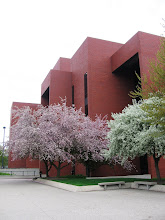The University Libraries’ Garnett Mystery Collection: A Collection Management Perspective

Everyone likes to receive gifts, and the University Libraries are no exception. Donations of library materials or monetary contributions assist us in our efforts to provide a rich array of resources and services for our students and faculty despite rising costs and tightening budgets. Over the years the Libraries have received a number of gift collections that have strengthened our holdings for specific subject disciplines, such as music, architecture, history, and military history, among others.
Few gifts, however, have caused as much happy excitement as a recent donation of over 2,800 mystery books written by about 450 contemporary, women authors. The books are the gift of an anonymous Ball State alumna who originally gave her collection to the Women’s Studies Program to be made available for others to enjoy. Realizing that the University Libraries are better prepared to circulate books, the Women’s Studies office made arrangements last July to turn the collection over to the Libraries. The original donor is still reading mysteries, and she expects to contribute more books in the future.
Because of its popular nature, the donation, now dubbed the Garnett Mystery Collection, raised some interesting questions from a collection management perspective. Who would be most likely to use these books? And for what purposes? How should they be organized to facilitate use? Where should they be located? And what about preservation? Over two-thirds of the collection consisted of paperbacks that surely would not survive repeated circulations.
While the collection is not without potential research and instructional value for such areas as Women’s Studies, Creative Writing, or Sociology, the largest readership was deemed to be mystery lovers pursuing recreational reading – readers who probably also enjoy the Bestsellers Collection on Bracken Library’s 1-East area. It seemed prudent, then, to keep the Garnett books together as a collection and locate them near the Bestsellers where several ranges of shelving were already in place that would provide sufficient space for the current collection and still accommodate its anticipated future growth.
On the assumption that most people like to browse popular fiction collections, a simplified call number schema was devised to arrange the collection in alphabetical order by author’s last name and then, for each author, alphabetically by title. Of course, bibliographic records were also added to the Libraries’ online catalog, CardCat, to assist readers looking for particular mystery writers or fictional detectives in whatever Libraries’ collection they might be – bestsellers, audio books, or general collections’ literature sections.
A renewable two-week loan period was established to provide circulation opportunities to as many people as possible for what is expected to be a high-demand collection.
Preservation was one of the more difficult issues to resolve. There was little doubt that some kind of binding would be necessary if the collection was to endure, yet part of the appeal of a browsing collection is its colorful book covers and the information that publishers often provide on them.
We did not want to sacrifice these features, even though the solution came with a cost both in money and staff time. For the hardbacks with dust jackets, library staff performed the time-consuming process of applying plastic covers to the original jackets. The paperbacks were sent to the Libraries’ commercial bindery where they received a special type of binding called DigiCovers. Unlike the typical library buckrum binding process, which removes and destroys the cover, the DigiCover process makes a digital copy of the book’s original cover before removing it and then incorporates the digital image as part of the outside of the bound volume. The result of these decisions is a mystery collection that is both durable and visually appealing.
To identify the collection, library staff also designed special bookplates, even acquiring new labeling software so as to be able to create bookplates small enough to use in the paperbacks.
One final consideration in processing this collection was timeliness. Recognizing the potential appeal of the mysteries to our students and faculty and the donor’s desire that the books be made available for others’ enjoyment, it was important to make the collection available to the public in as short a time as possible. To accomplish this, both streamlined procedures and efficient use of available staff were required.
The normal cataloging process was expedited by the decision to download full bibliographic records from OCLC’s WorldCat into CardCat with minimal local revisions. In this we were fortunate that all but nine of the over 2,800 titles had usable records in WorldCat. Assignment of the locally devised call numbers was partially automated using an Access database developed by one of the Libraries’ catalogers. Other processes, such as binding and physical processing, did not lend themselves to shortcuts and were accomplished with great efficiency and much hard work on the part of the responsible library staff.
For more information, contact Sharon A. Roberts, Assistant Dean for Collection Resources Management, SRoberts@bsu.edu, 765-285-1305.
Labels: Ball State, cataloging donation, collection management, library


1 Comments:
We know that choosing a college is a big decision. College or University Search is here to help you make the best decision for you. To begin, choose one of two starting points. Use our University Search Tool to generate a list of colleges and universities that suite your preferences. Use university search tool to research a college that you already have in mind on AAU
Post a Comment
<< Home